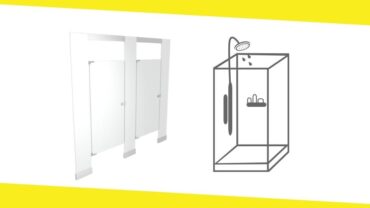Nine Energy-Efficient Home Upgrades You Can Consider

These days, everyone’s buzzing about the concept of an energy-efficient home, and for good reason! Not only do these home upgrades help Mother Earth by reducing our carbon footprint, but they also help our wallets by decreasing our energy bills.
Let’s face it: who wouldn’t want both? If you’re pondering over where to begin, here are some ideas to get you started:
1. Smart Thermostats
These are no ordinary thermostats. They’re smart and for a reason! These devices learn your family’s routines and can adjust heating and cooling to when you’re home or away, saving energy in the process. Thinking of a smart way to manage your home’s temperature? Consider getting a programmable thermostat. This nifty device adjusts the temperature based on when you’re home, awake, or out and about. So, instead of heating or cooling an empty house, it conserves energy.
You can set it to warm up or cool down during specific times on weekdays and weekends. Plus, some advanced thermostats even let you control them remotely or sync them with other home devices. By taking charge of your heating and cooling in this way, not only do you save energy and cut down costs, but you also reduce environmental impact—all while keeping your living space cozy.
2. Roof Replacement
A roof does more than just shield us from rain and sun. It plays a great role in ensuring how energy-efficient our home is.
An old or damaged roof might be causing more harm than you think. It can become a sneaky passage for warm air to escape during winters and cool air during summers. This not only strains your heating or cooling system but also increases your energy bills.
Opting for a roof replacement, especially with energy-efficient materials, can act as an insulating layer for your home. These materials are designed to reflect more sunlight and absorb less heat than a standard roof, helping maintain an optimal temperature indoors.
Furthermore, a well-ventilated roof can reduce energy costs during the hotter months. How? By ensuring hot air doesn’t get trapped in the attic, making your air conditioning system work overtime.
Roof replacements might sound like a big task, but the long-term benefits, both for the planet and your pocket, make it a worthy investment.
3. LED Lighting
LEDs are not just energy savers; they also last way longer than traditional bulbs. Switching to LED lighting is a practical choice for your home. LED bulbs use considerably less energy compared to traditional bulbs, yet they produce the same brightness. Moreover, LEDs last much longer, which means you won’t have to replace them as often. By making the transition to LED lights, you can expect to see a reduction in your electricity bills and also reduce the overall energy consumption of your home. It’s a simple step towards a more energy-efficient household.
4. Energy-Efficient Appliances
When aiming to reduce energy consumption at home, consider upgrading your appliances. Appliances with the ENERGY STAR label are designed to be more energy-efficient. By replacing older models with these certified ones, you can not only achieve energy savings but also notice a reduction in your utility bills. It’s a practical approach to both environmental responsibility and cost efficiency.
5. Insulation
Improving your home’s insulation can lead to better energy efficiency and reduced heating and cooling expenses. Proper insulation effectively keeps the indoor temperature stable, requiring less energy. For better results, consider boosting insulation in areas like the attic, walls, and floors. Using materials with a high resistance value, such as rigid foam, can further enhance insulation effectiveness and contribute to an energy-efficient home.
6. Seal Windows and Doors
Making sure your home is airtight can boost energy efficiency and make indoor spaces more comfortable. Often, small gaps in walls, ceilings, or around windows let in outside air and let the inside air out. Fixing these gaps using materials like caulk or weather stripping can result in noticeable savings. In fact, the EPA suggests that sealing up these leaks might cut down heating and cooling costs by up to 15%. Besides helping with insulation, this can also prevent issues like mold, making your home healthier and more eco-friendly.
7. Solar Panels
These panels take in sunlight and turn it into electricity for your home. This means you’ll depend less on the usual electricity sources and see a dip in your bills.
Sure, there’s a cost to set them up initially, but in the long run, they often pay for themselves with the savings. Plus, homes with solar panels are becoming quite the trend in the housing market. People see the value in having a home that’s efficient and eco-friendly. So, not only do you save on bills, but you might also boost your home’s resale value.
8. Low-Flow Fixtures
Using low-flow showerheads and faucets is a smart move to save water and energy at home. They’re crafted to give you good water pressure while using less water. So, you still get a good shower but with much less waste. The EPA suggests families can hold onto about 2,700 gallons annually by using WaterSense showerheads. And the U.S. Department of Energy notes these fixtures can cut down your water use by 25% to 60% yearly. So, for a small price upfront, you can enjoy savings and do a bit for the planet too.
9. Shade Trees
Planting shade trees around your home is a natural way to cut down on cooling costs. As they mature, these trees shield your property from the sun’s intensity, reducing the need for air conditioning and offering a cooler, energy-efficient environment. Plus, they add a touch of greenery and tranquility.
Conclusion
Adopting energy-efficient home upgrades isn’t just about following a trend; it’s about making conscious decisions for a better tomorrow. And guess what? That tomorrow also comes with the perk of reduced energy bills. From the roof above our heads to the ground beneath our feet, every bit counts. So, the next time you consider a home upgrade, think about energy efficiency. Your future self, your wallet, and our planet will thank you for it!
Recommended For You
Update Your Bathroom Partitions Easily
Most Inside
Most Inside offers high-quality recommendations and valuable updates to enhance all aspects of your life, providing premium guidance and enriching experiences.




